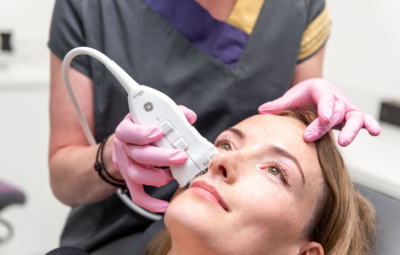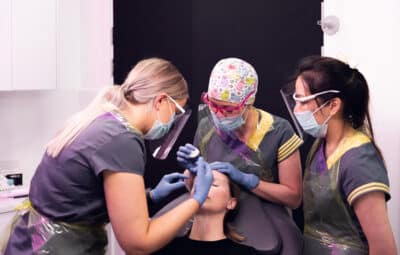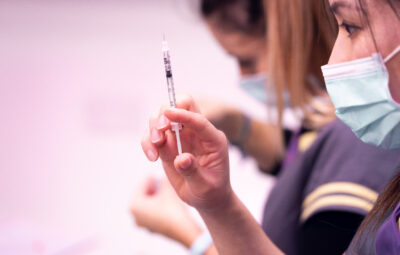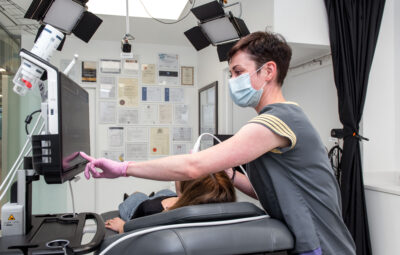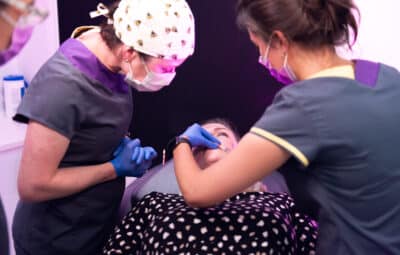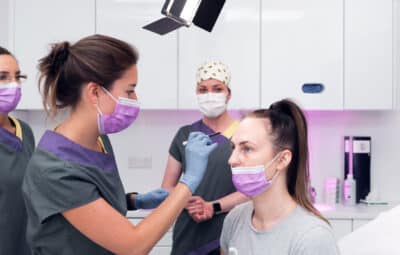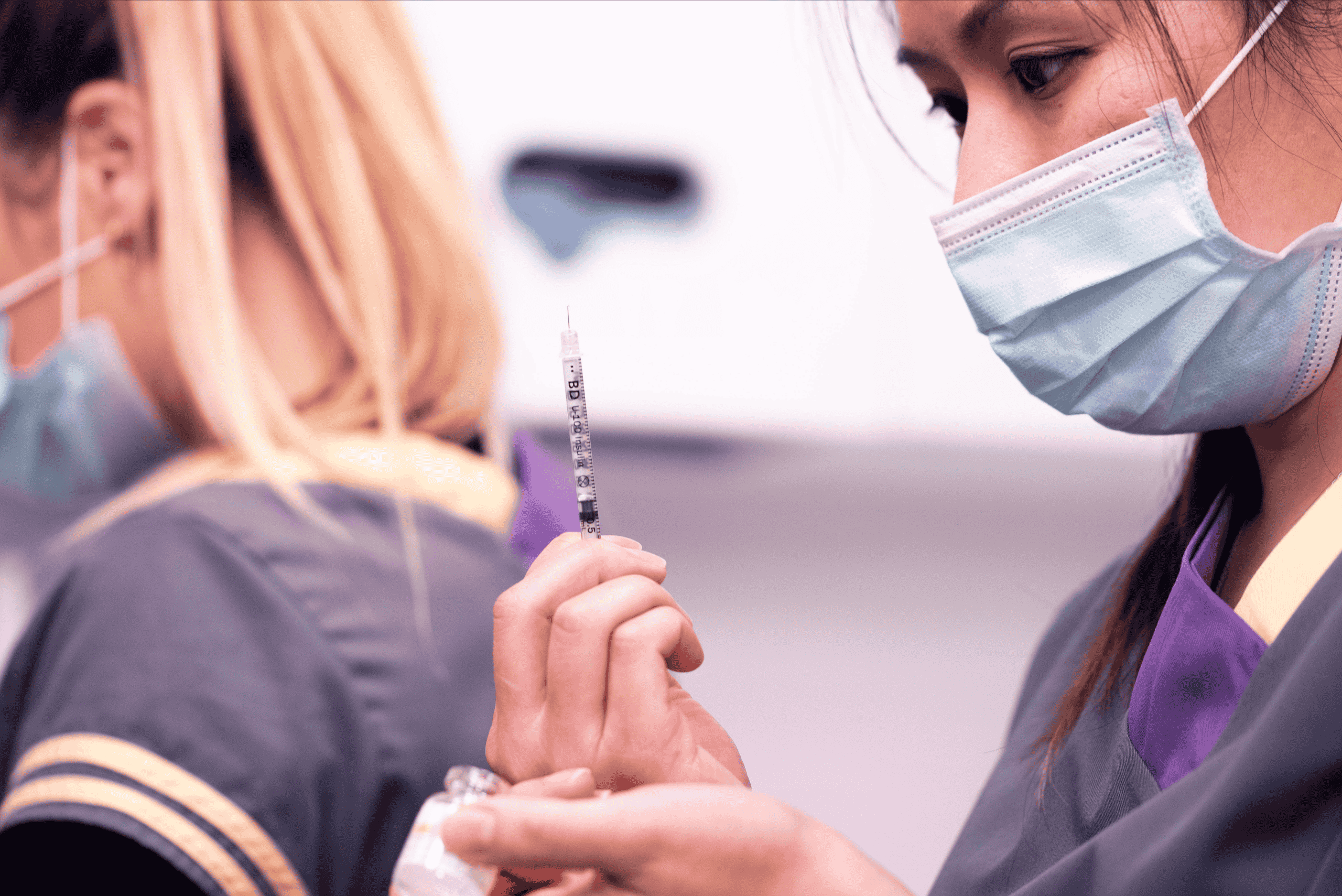
Chin Botox: The Best Fix for Dimpled or Pebbled Chins
24 July 2025
In this post:
- Chin Botox effectively treats dimpled or pebbled chin texture by targeting the mentalis muscle, but requires advanced anatomical knowledge due to the complexity of the lower face and the risk of affecting nearby muscles.
- Candidate selection is key. The lip purse test helps determine if mentalis muscle hyperactivity is the cause, ensuring Botox will actually improve chin texture.
- Proper injection technique, dosing, and aftercare are critical for safe and successful results, with most patients seeing results within 1-2 weeks and enjoying effects for up to 12 weeks.
- Comprehensive, advanced training is essential, covering facial assessment, anatomy, complications, and ultrasound guidance.
When patients complain of a dimpled, pebbled, or ‘orange peel’ texture on their chin, they’re often describing one of the most treatable yet under-diagnosed aesthetic concerns. Chin Botox, specifically targeting the mentalis muscle, offers an effective solution for smoothing that unwanted texture in the chin.
At the Smileworks Aesthetic Training HUB, we’ve seen increasing demand from practitioners seeking to master this advanced technique. While chin Botox might initially seem straightforward, it requires a sophisticated understanding of lower facial anatomy and precise injection protocols to achieve the desired result safely.
This treatment is more than just smoothing a dimpled chin. It’s about understanding the complex interplay of facial muscles, knowing when a patient is (and isn’t!) suitable, and executing the treatment with the necessary anatomical precision.

What is Chin Botox?
Chin Botox treatment uses botulinum toxin to freeze movement in the mentalis muscle, the primary muscle responsible for chin dimpling and pebbled texture. This muscle sits within the chin area, extending from the inferior aspect of the jaw to insert into the skin of the chin and lower lip.
The mentalis muscle serves an important role in our lower facial expressions. It’s responsible for protruding and elevating the lower lip during pouting movements and creates an upward pull on the chin skin. When this muscle is hyperactive or overused, it contracts repeatedly, creating the characteristic cobblestone appearance.
While most injectors will already be familiar with treating Botox in the upper face, the lower face is not always taught during beginner Botox training. The lower face is a more complex, advanced area due to the multiple muscles working in close proximity. One wrong injection can cause an asymmetrical smile and affect lip function. This is why it’s so critical to have a thorough understanding of this area’s anatomy.
Understanding The Dimpled Chin
The ‘orange peel’ or cobblestone look occurs when the mentalis muscle contracts in an uneven pattern, pulling the overlying skin into irregular dimples and ridges. This texture becomes more pronounced with age, but it can affect younger patients as well. A pebbled chin can also form due to genetic predispositions or from a naturally hyperactive mentalis muscle.

How Does Chin Dimpling Happen?
Mentalis Muscle Hyperactivity: The most common cause of chin dimpling is an overactive mentalis muscle. This can develop from habitual expressions, stress-related muscle tension, or simply genetic predisposition. People who frequently purse their lips or express concentration through chin movements are more likely to develop this texture, even when the chin is at rest.
Age-Related Changes: As we age, several changes contribute to a more pronounced dimpled chin. Our bones change as we age, which can alter the muscle’s attachment points. Decreased skin elasticity or loss of facial fat are other causes; the overlying tissue eventually cannot bounce back from repeated muscle contractions like it used to.
Mental Crease: The mental crease (or labiomental crease) is the horizontal line that appears above the chin area. Though it differs from chin dimpling, the mental crease can exacerbate the appearance of it.
Who is a Candidate for Chin Botox?
Proper candidate selection is absolutely critical for a successful chin Botox treatment. Unlike upper face Botox where results are relatively predictable, chin treatments require a more careful facial assessment to ensure the patient will actually benefit from relaxing the mentalis muscle.
The Lip Purse Assessment Test
A reliable way to determine whether someone would suit chin Botox is the lip purse test. Ask your patient to purse their lower lip forcefully, as if they’re pouting or expressing displeasure. During this contraction, observe the chin area carefully:
- Suitable candidates: The chin will visibly dimple, pucker, or develop a cobblestone texture.
- Unsuitable candidates: Little to no change occurs in chin texture during muscle contraction. Even minimal dimpling does not always justify treatment.
Simply put, if no dimpling occurs during contraction, Botox won’t improve the chin’s appearance because the texture isn’t caused by muscle activity.
The Ideal Patient
Patients who benefit most from chin Botox typically present with pronounced mentalis muscle activity that creates noticeable dimpling during both animation and at rest. They may describe feeling self-conscious about their chin texture or that it makes them feel older than they are.
Age Considerations: While there’s no strict age limit, younger patients (20s-30s) with dynamic dimpling often see more dramatic improvements with established static changes. However, older patients can still achieve great results, particularly when combined with other rejuvenation techniques.
Realistic Expectations: Suitable candidates understand that chin Botox smooths texture but won’t address other chin concerns like projection, volume loss, or significant sagging. Patients seeking chin augmentation or major structural changes may better suit dermal fillers.
Medical Considerations: As with all Botox treatments, candidates should be in good health and have no contraindications to neuromodulator treatments. Pregnancy, certain neurological conditions, and some medications preclude treatment.
The Chin Botox Procedure
Consultation & Facial Assessment
Every chin Botox treatment begins with a comprehensive consultation and facial assessment. Beyond the lip purse test, you should evaluate your patient’s full lower face anatomy, discuss what they’re looking to get out of treatment, and explain any potential limitations.
Document the baseline appearance with photographs from multiple angles, including frontal view and profile shots both at rest and during mentalis muscle contraction. This documentation is essential for tracking treatment effectiveness and planning any future sessions.
Anatomical Marking & Preparation
Proper marking is essential for safe, effective treatment. While the mentalis muscle anatomy is relatively straightforward to identify (especially during contraction), precision still matters enormously.
Chin Botox injection points typically fall along the midline of the chin, positioned over the muscle belly during attraction. The injection site sits on the anterior aspect of the chin’s apex, usually in line with the centre of the lower lip.
Injection Technique & Dosing
Most practitioners use 4-8 units of botulism toxin for chin treatment, though dosing should always be tailored to individual patient anatomy and muscle strength. Conservative dosing is advisable, especially when treating the area for the first time.
Botox needle size is a personal preference. Anywhere between a 30G to 34G needle will produce good results. The injection should reach a depth of 2-3mm to ensure toxin reaches both deep and superficial muscle fibres.
The most common injection technique involves placing a single bolus directly into the muscle belly. For patients with broader mentalis muscle activity, you might choose to use two smaller lateral injections on either side of the central bolus.

Immediate Post-Treatment Care
Chin Botox requires similar Botox aftercare to other treatment areas. Patients should avoid touching or applying pressure in the treatment area. They should also try to avoid activities that require forceful lip pursing for 24-48 hours post-treatment.
If a patient experiences any swelling or discomfort, they can apply ice to the area without affecting results. Full results are expected within 1-2 weeks. You should assess them at the two week mark and give a top-up if necessary. Results generally last 10-12 weeks.
Why Proper Botox Training is Essential
The Complexity of the Lower Face
The lower face presents unique challenges that distinguish chin Botox from the more common upper face treatments. Multiple muscles work in close proximity, each serving specific functional roles in speech, eating, and facial expression.
The mentalis, depressor labii inferioris, depressor anguli oris, and portions of the orbicularis oris all influence chin and lip appearance and function. An injector who doesn’t fully grasp how these muscles interact is essentially practising blindly. One misplaced injection can negatively affect one or more of these important muscles.
Advanced Assessment Skills
Proper training teaches practitioners to go beyond the basic lip purse test. Comprehensive assessment includes evaluating overall facial harmony, understanding how chin changes will affect total facial balance, and recognising when chin Botox alone won’t address a patient’s aesthetic concerns.
Training days should cover patient before and after photo protocols, documentation standards, and how to identify contraindications specific to lower facial treatments. These skills separate competent practitioners from those simply following the bare minimum injection protocols.
Complication Management
Perhaps most importantly, proper training teaches practitioners how to recognise and manage complications when they occur. Understanding the timeline for different types of adverse effects, knowing when to reassure versus when to take action, and having protocols for managing a case of botched Botox if it does arise are essential skills.
Facial ultrasound training is particularly valuable for preventing and managing complications. Ultrasound allows you to visualise muscle anatomy in real-time and confirm accurate product placement.
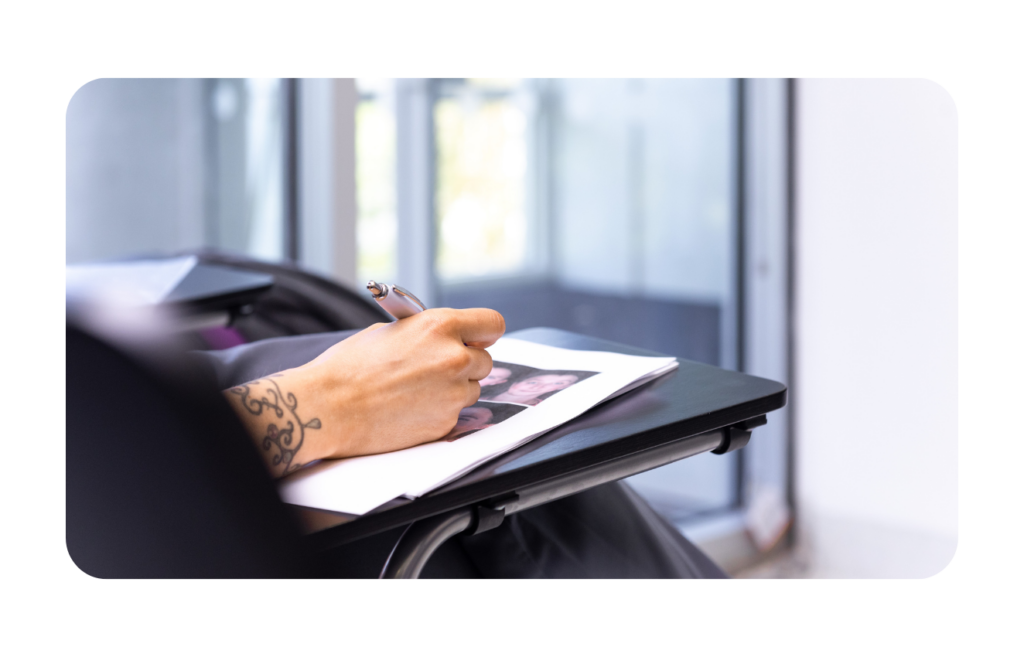
Ready to Master Chin Botox Technique?
At the Smileworks Aesthetic Training HUB, we prepare injectors for the full spectrum of aesthetic treatments, from foundational techniques to advanced treatments like chin Botox. Our courses combine rigorous theoretical education with intensive hands-on training, ensuring you develop both the knowledge and practical skills you need for a safe, successful practice.
Now it’s time we introduce some of the HUB’s incredible online and hands-on course offerings.
If you’re just starting out in aesthetics, our Foundation Botox & Lip Filler course will give you the best foundations in aesthetic injecting. All of our courses start online, so you can jump into the course material right away!
It doesn’t stop there. If you already have some injecting experience, look no further than our Foundation Facial Ultrasound Course and our Advanced Facial Ultrasound Course, two must-haves for all aesthetic practitioners. Ultrasound is the single most important tool for ensuring safe and effective treatments every time.
For those looking for more in-depth training, we recommend booking a one-to-one mentoring session with Dr MJ. These sessions are 100% customisable, and you’ll receive personalised instruction based on your skill level and goals.
Join us at the HUB today. Let’s shape the future of aesthetic medicine together and ensure safe, effective, and transformative results for every patient.
Want to try out our courses before committing? Take advantage of our free trial for a taste of what learning at the HUB is like.
Related blog posts:
